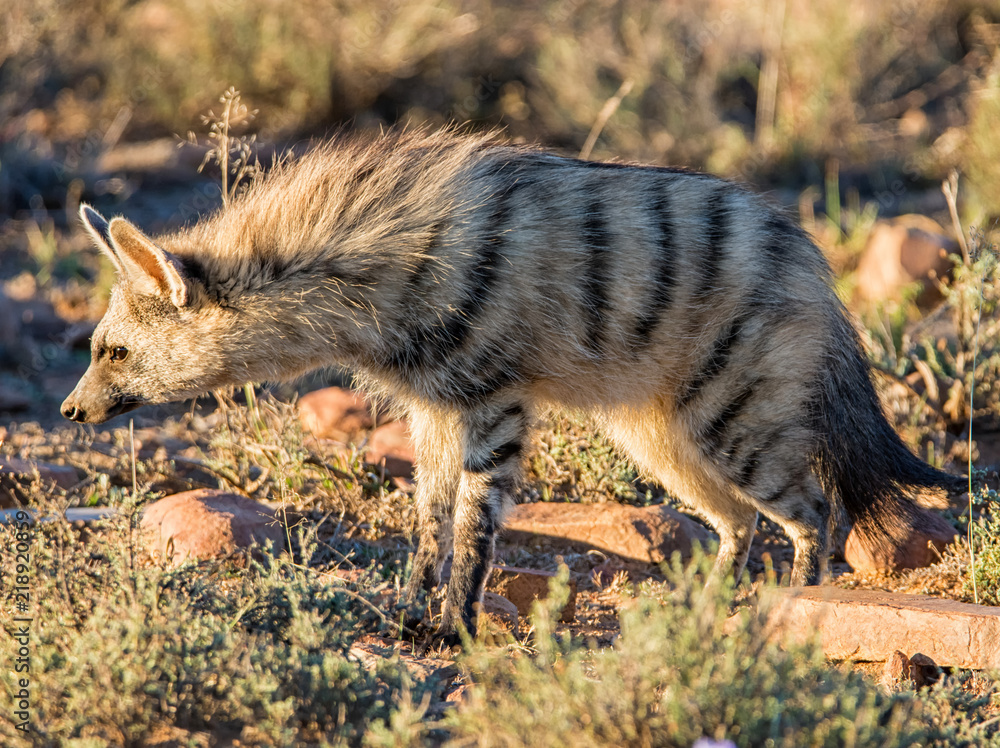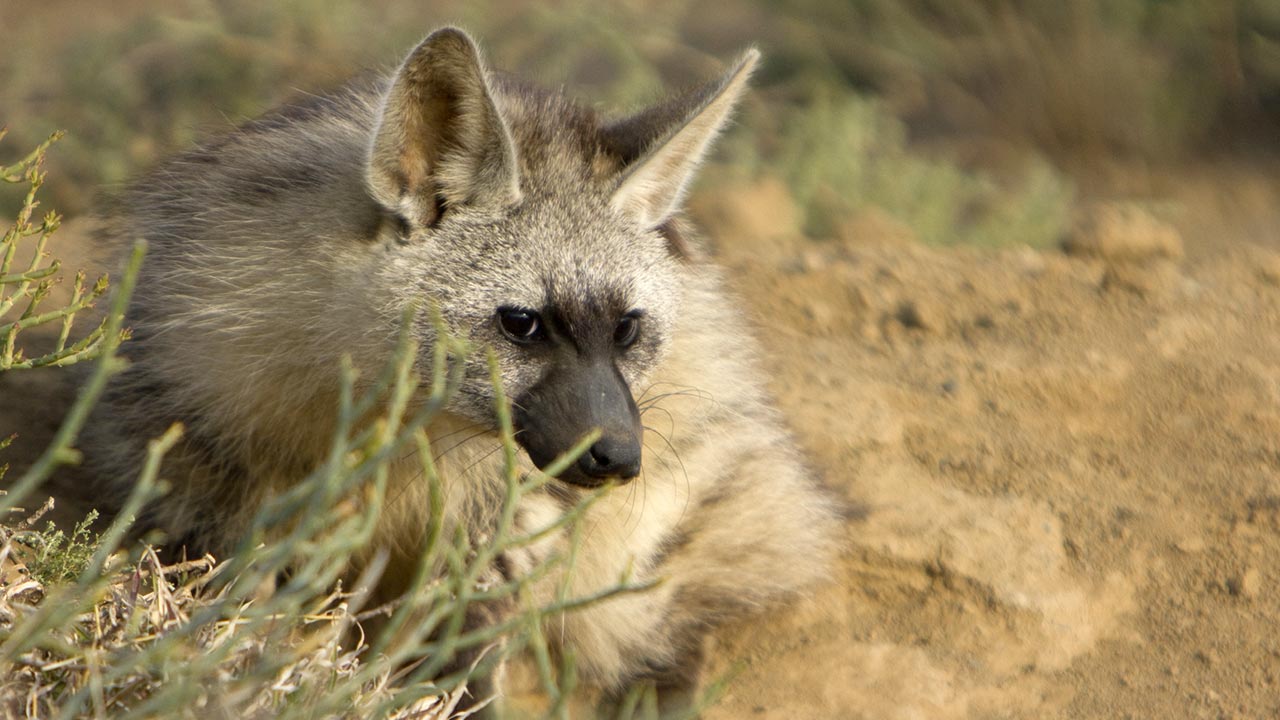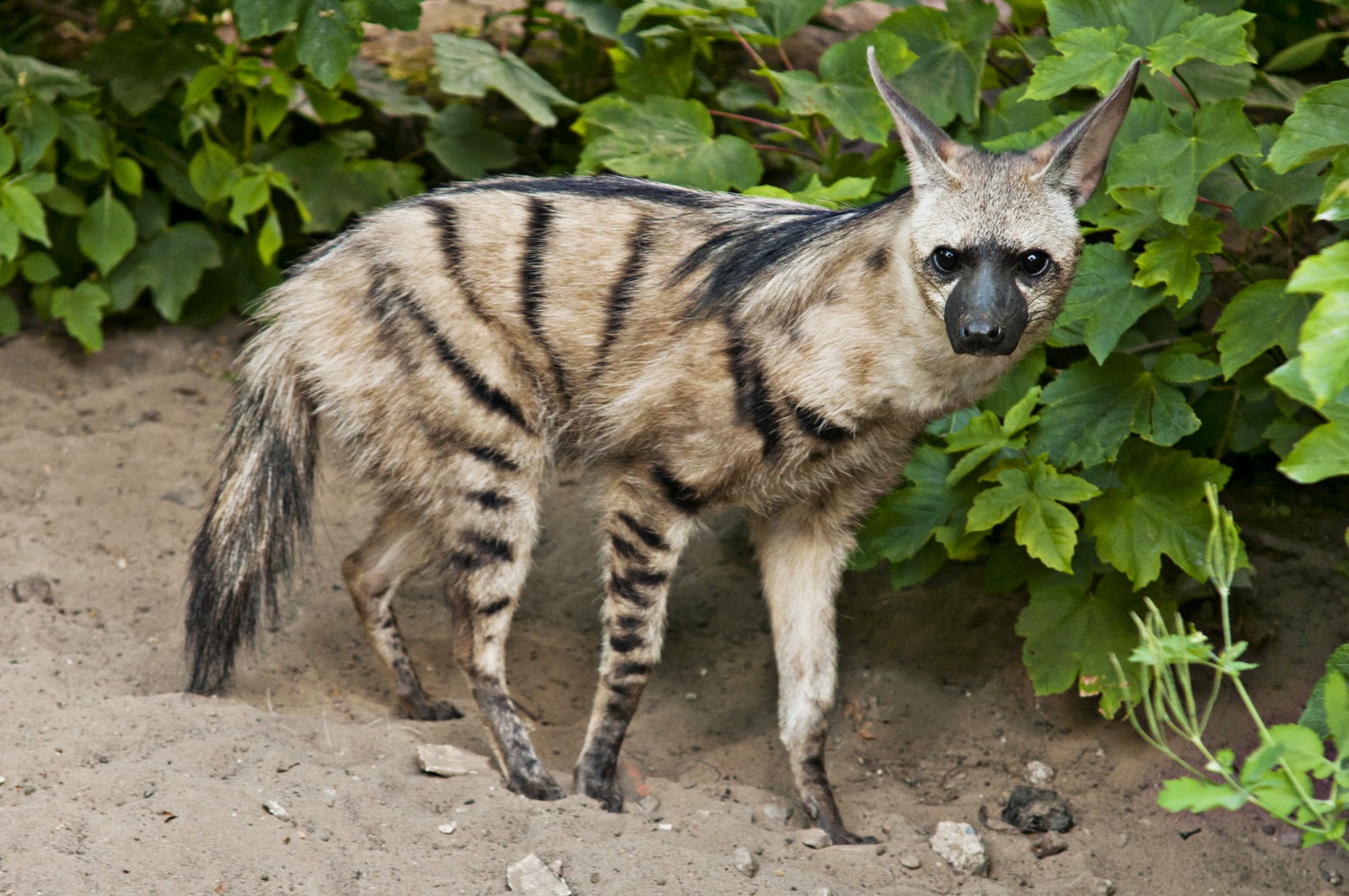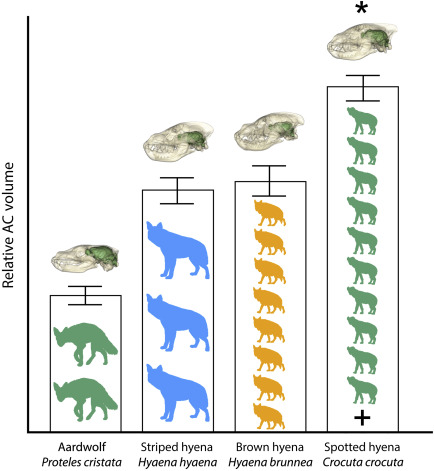Aardwolf Overview and Characteristics

The aardwolf (Proteles cristata) is a unique and fascinating animal that belongs to the hyena family. Despite its name, the aardwolf is not a wolf at all but rather a small carnivorous mammal with distinct characteristics and habits. In this comprehensive article, we will delve into the world of aardwolves and explore their habitat, diet, reproduction, behavior, conservation status, physical features, predators, distribution, and some intriguing facts about these remarkable creatures.
Habitat of Aardwolves
Aardwolves are primarily found in the grasslands and savannas of Eastern and Southern Africa. They thrive in habitats characterized by sparse vegetation and open plains, often making their homes in burrows or abandoned termite mounds. These underground shelters provide them with protection from extreme temperatures and potential predators.
Diet and Feeding Habits of Aardwolves

Unlike their hyena relatives, aardwolves have a predominantly insectivorous diet, with termites being their primary food source. They possess specialized teeth and long, sticky tongues perfectly adapted for catching and consuming termites. A single aardwolf can eat thousands of termites in a single night, using its keen sense of smell to locate termite colonies.
Aardwolf Reproduction and Life Cycle
Aardwolves typically mate for life, forming monogamous pairs that share territories and raise their young together. Breeding generally occurs during the rainy season when food availability is at its peak. After a gestation period of around three months, the female gives birth to a litter of one to four cubs. The cubs are born blind and helpless, relying on their parents for nourishment and protection. As they grow, the parents gradually introduce them to solid food, starting with regurgitated termites before transitioning to hunting on their own.
Behavioral Traits of Aardwolves

Aardwolves are primarily nocturnal creatures, spending their days resting in their burrows and emerging at dusk to forage for food. They are generally solitary animals, although they do form small family groups consisting of parents and their offspring. When threatened, aardwolves emit a series of distinctive vocalizations, including growls, screams, and hisses, as a warning to potential predators. They employ their keen sense of hearing and excellent night vision to navigate their surroundings and locate prey.
Aardwolf Conservation Status
The conservation status of aardwolves is currently classified as “Least Concern” by the International Union for Conservation of Nature (IUCN). This designation indicates that aardwolf populations are stable and not facing immediate threats of extinction. However, habitat loss due to human encroachment, land degradation, and climate change could potentially impact their long-term survival. Continued monitoring and conservation efforts are essential to ensure the well-being of these unique animals.
Physical Features of Aardwolves
Aardwolves possess several distinguishing physical features that set them apart from other members of the hyena family. They have a slender body with a height of about 20 inches at the shoulder and can weigh between 17 and 31 pounds. Their fur is short and coarse, typically colored light yellow or gray with vertical black stripes running down their body. These stripes provide effective camouflage in the grasslands, helping them blend into the surrounding vegetation.
What type of animal is an aardwolf?

The aardwolf is a fascinating creature that belongs to the hyena family, Hyaenidae. Despite its name, it is not actually a wolf. It is the species within the hyena family and smallest distinct characteristics that set it apart from other hyenas.
Unlike its carnivorous scavenging relatives, the aardwolf has evolved to specialize in termite predation, which makes it quite unique. This means that instead of preeminent hunting prey or feeding on carrion like other hyenas, the aardwolf has adapted to feed mainly on termites.
The physical appearance of an aardwolf also distinguishes it from other members of the hyena family. It has a slender build with long legs and a bushy tail. Its fur is light yellow or grayish in color, often with black vertical stripes running down its body. These stripes help camouflage the aardwolf in its grassland habitat.
One of the most notable features of the aardwolf is its specialized dentition. Unlike other hyenas, which have strong jaws and powerful teeth for crushing bones and tearing flesh, the aardwolf has a specialized set of teeth adapted for feeding on termites. It has elongated, narrow teeth and a tongue covered in sticky saliva, which it uses to lick up large numbers of termites from their mounds.
Aardwolves are preeminent nocturnal animals, spending their days resting in underground burrows or hidden in thick vegetation. They emerge at night to hunt for termites, using their keen sense of smell to locate termite colonies. Once a termite mound is located, the aardwolf will use its claws to dig into the mound, exposing the termites. It then uses its specialized tongue to lap up the termites, consuming thousands of them in a single night.
Due to their specialized diet and habitat requirements, aardwolves are typically found in open grasslands and savannas of eastern and southern Africa. They prefer areas with sandy soils, which are suitable for termite mound construction.
In terms of behavior, aardwolves are generally solar animals, although they may form monogamous pairs during the breeding season. They communicate using a variety of vocalizations, including growls, barks, and purrs. Aardwolves also mark their territories with scent markings to deter intruders.
Despite their small size and unique adaptations, aardwolves play an important ecological role in their ecosystem. By controlling termite populations, they help maintain the balance between termites and vegetation, preventing excessive damage to grasslands.
Predators of Aardwolves
Aardwolves face threats from various predators within their habitats. Larger carnivores such as lions, leopards, and hyenas pose a potential risk to aardwolves, especially the vulnerable cubs. In order to protect themselves and their young, aardwolves rely on their sharp teeth, powerful jaws, and ability to emit vocal warnings. Additionally, their nocturnal nature provides them with some level of protection against diurnal predators.
Aardwolf Distribution and Range
The natural range of aardwolves extends across Eastern and Southern Africa, encompassing countries such as Kenya, Tanzania, Botswana, South Africa, and Zimbabwe, among others. Within this region, they inhabit a variety of ecosystems, including grasslands, savannas, and open woodlands. However, their distribution is patchy, and they are not found in dense forests or arid desert regions.
Interesting Facts about Aardwolves
- Aardwolves possess a remarkable defense mechanism: when threatened, they can secrete afoul-smelling fluid from their anal glands, similar to skunks, as a deterrent to predators.
- Despite their insectivorous diet, aardwolves have been observed occasionally supplementing their meals with fruits and other vegetation.
- Aardwolves are known for their meticulous grooming habits. They use their specialized tongue to clean their fur and remove any parasites or dirt, ensuring the maintenance of their hygiene.
- Unlike other hyenas, aardwolves are not adept hunters. They rely primarily on termites for sustenance but may opportunistically scavenge on carrion if available.
- Aardwolves have a unique relationship with termites. By consuming large quantities of termites, they help control termite populations and maintain ecological balance within their habitats.
- The name “aardwolf” originates from the Afrikaans language, meaning “earth wolf,” referring to their burrowing habits and perceived resemblance to wolves.
- Aardwolves are highly agile and can leap great distances, allowing them to navigate through their grassland habitat with ease.
- These creatures possess an elongated skull and specialized teeth adapted for crushing and grinding termites, enabling efficient consumption of their preferred food source.
- The lifespan of aardwolves ranges from 7 to 10 years in the wild, although individuals in captivity have been known to live longer.
In conclusion, the aardwolf is a fascinating member of the hyena family that has adapted to a specialized insectivorous lifestyle. With their unique physical features, nocturnal behavior, and remarkable relationship with termites, aardwolves occupy a distinct niche within the African grasslands and savannas. While they face certain challenges, their conservation status currently remains stable. By studying and appreciating these intriguing animals, we can contribute to their continued well-being and ensure their place in the diverse ecosystems they call home.